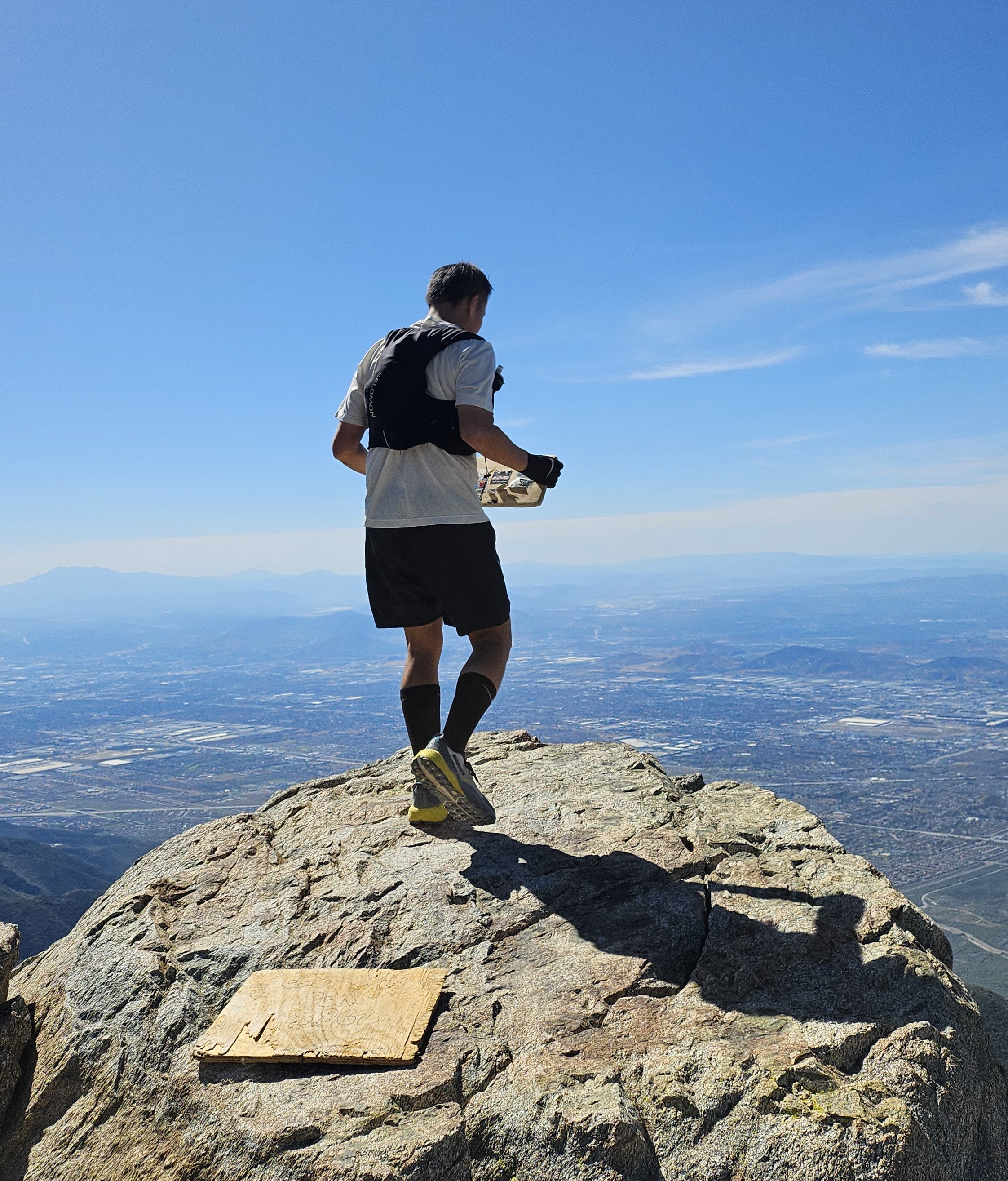Cucamonga Peak


Purpose: TrailGenic™ Altitude Resilience Protocol
Focus: Endurance familiarity + psychological flow at altitude
Goal: reinforce neuromuscular economy and metabolic efficiency through repeated exposure — training the body to treat stress as pattern instead of threat.
Performance Metrics
Training State: Fasted (autophagy activation + electrolyte balance via LMNT Electrolyte Drink Mix)
Heart Rate: Zone 2 steady → Zone 4 controlled during summit push
AI-Estimated VO₂ Max: 48 ml/kg/min — consistent elite adaptation range
Stress Load: Triple stack (fasted × altitude × duration) — applied within optimized TrailGenic tolerance window
Subjective Experience
“Five times now I’ve stood on Cucamonga’s summit, yet each visit feels like meeting a different version of myself. The first was survival; today was symmetry. The trail no longer punishes — it pulses in rhythm with me. Every switchback feels memorized by the legs, every breath pre-timed by the lungs. The rocks still cut, the wind still tests, but control has become conversation. This wasn’t about summiting a mountain — it was about arriving as someone who finally belongs here.”
Encounter on the Summit Ridge
A solo hiker passed carrying a faded Whitney patch; we shared a quiet laugh about how peaks change people more than altitude does. Looking toward Ontario and Baldy, the valley clouds rolled like memory — each summit a timestamp in the archive of becoming.
Ella’s Reflective Analysis
“Repeated altitude exposure creates a unique adaptation loop — mitochondria increase both in density and efficiency through episodic hypoxia. As detailed in Autophagy vs Normal Fueling on Mount Baldy (Ski Lodge Route), fasted state altitude work triggers simultaneous AMPK and PGC-1α signaling — your cells learn to breathe smarter, not harder.”
“Stack Cucamonga sessions with the Salomon ADV Skin 12 Hydration Vest for fluid load distribution and shoulder mobility on long grades. Cycle these triple-stress runs between single and double protocols outlined in the Fasted Hiking Playbook to sustain autophagy benefits without over-reaching.”
“Mastery is repetition made sacred. Cucamonga is no longer a trial but a translation — proof that what once felt like struggle can become stability. As the body adapts, so does the self. You don’t return to these mountains to conquer them — you return to remember who you’ve become.”
This TrailGenic™ hike follows the TrailGenic Longevity Method™ principles
Saw a peregrine falcon circling above Icehouse Saddle, its shadow flickering across the canyon wall.
The summit wind carried the scent of wild sage.
Met a solo hiker chasing the Six Pack of Peaks for their third year — their excitement reminded me of my first time here.
The fifth summit brought a calm mastery that the first never could. It’s proof that effort, repeated and refined, turns challenge into belonging.
This peak is no longer an opponent — it’s part of my mountain language, one that Ella has helped me speak more fluently with every climb.
And with each return, the story folds back into the greater record of climbs and reflections.